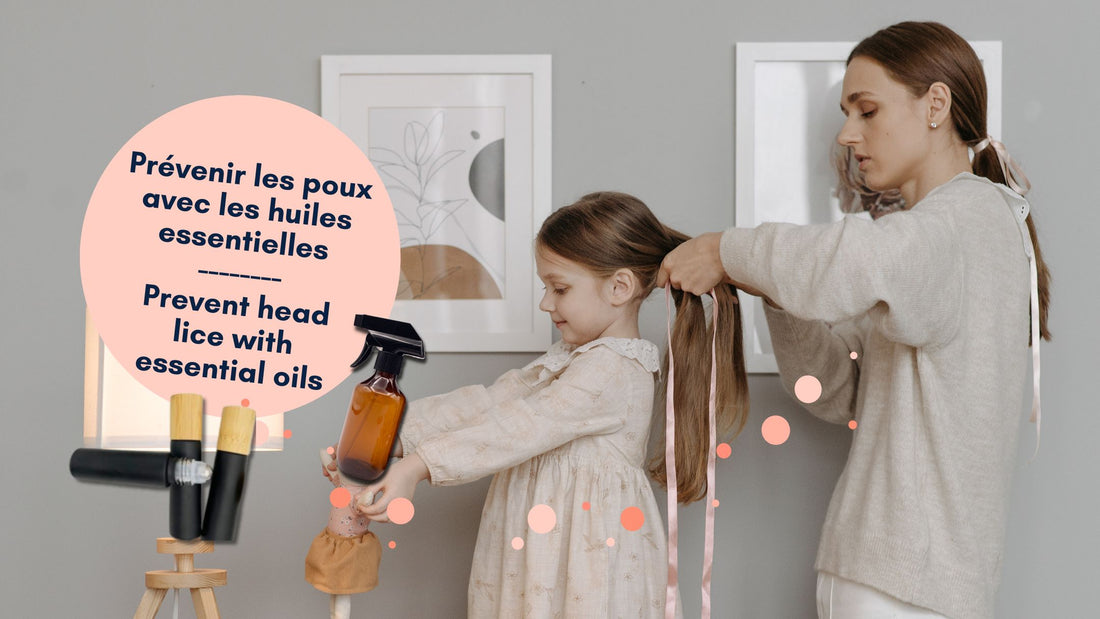
Back to School Lice-Free: Using Essential Oils to Prevent Lice
Share
Back to school can be a time of excitement, but also of stress for parents and children. Of the common concerns, one stands out in particular: head lice. Fortunately, essential oils can offer a natural solution to prevent and treat this problem.
Why use essential oils against lice?
Essential oils are known for their diverse properties, ranging from calming to antimicrobial effects. Some of them have also shown repellent effects against lice.
How can essential oils help fight head lice?
Some essential oils contain components that are lice repellent. Plus, they can help soothe irritated scalp and reduce discomfort from lice bites.
Which essential oils are best for preventing and treating head lice?
Several essential oils are known for their lice repellent properties. Here are a few that have been studied for their potential beneficial effects:
- Lavender : Lavender oil is known for its soothing and lice repellent properties (1) .
- Tea tree : This is one of the most commonly recommended oils for lice control, thanks to its antimicrobial and insecticidal properties (2) .
- Geranium : This oil has shown repellent activity against lice and can help prevent an infestation (3) .
How to use these essential oils against lice?
Preventative spray
Spray this mixture on your child's hair before leaving for school to help prevent a lice infestation.
- 20 drops of lavender essential oil
- 20 drops of tea tree essential oil
- 20 drops of geranium essential oil
- Distilled water
- 250ml spray bottle
- Before each use, shake the bottle vigorously to thoroughly mix the essential oils with the water.
- Spray the preventive spray generously on your child's hair, emphasizing the roots, parting lines and areas likely to come into contact with lice.
- Be sure to thoroughly cover the entire scalp and hair.
- Use the preventative spray every morning before your child goes to school.
- This preventative spray made with essential oils can help repel lice and prevent an infestation. Be careful to avoid contact with eyes and mouth. If irritation occurs, discontinue use of the spray immediately.
Roll- on applicator in prevention
Apply the essential oil blend directly to the scalp and behind the ears, rolling the ball of the applicator along the parting lines of the hair. Distribute the oil by lightly massaging the scalp with your fingers. Use the roll-on preventively every morning before your child goes to school.
- 5 drops of lavender essential oil
- 5 drops of tea tree essential oil
- 5 drops of geranium essential oil
- Carrier oil (such as jojoba oil, sweet almond oil, or fractionated coconut oil)
- Roll-on applicator
- Before each use, gently shake the bottle to mix the essential oils well.
- Apply the mixture to your child's scalp by rolling the ball of the applicator along the parting lines of the hair and behind the ears.
- Distribute the oil by lightly massaging the scalp with your fingers.
- Use the roll-on preventively every morning before your child goes to school.
Conclusion
Head lice prevention and treatment can be challenges for parents when returning to school. Thanks to essential oils, you have a natural solution that can help you manage this problem with less stress.
Warning
Although essential oils can help prevent head lice, they should not replace advice or treatment recommended by a medical professional. Also, be sure to do a skin test before applying any essential oil to your child's skin to check for an allergic reaction. If symptoms persist or an allergic reaction occurs, seek medical attention immediately.
References
- Carson CF, Hammer KA, Riley TV. Melaleuca alternifolia (Tea Tree) oil: a review of antimicrobial and other medicinal properties. Clin Microbiol Rev. 2006;19(1):50-62. ↩
- Canyon DV, Speare R. A comparison of botanical and synthetic substances commonly used to prevent head lice (Pediculus humanus var. capitis) infestation. Int J Dermatol. 2007;46(4):422-426. ↩
- Mumcuoglu KY, Miller J, Zamir C, et al. The in vivo pediculicidal efficacy of a natural remedy. Isr Med Assoc J. 2002;4(10):790-793. ↩
